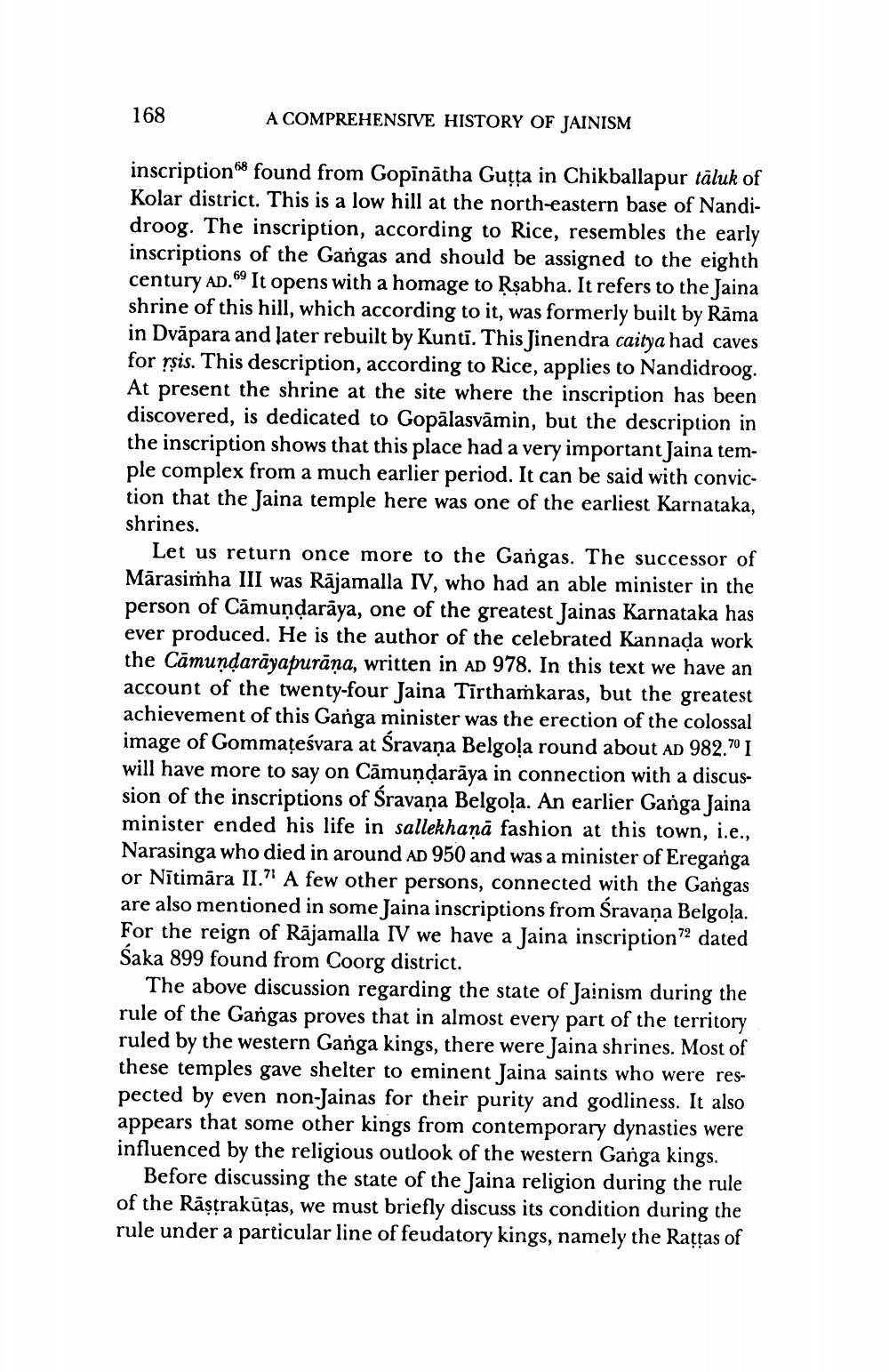________________
168
A COMPREHENSIVE HISTORY OF JAINISM
69
inscription found from Gopinatha Guṭṭa in Chikballapur taluk of Kolar district. This is a low hill at the north-eastern base of Nandidroog. The inscription, according to Rice, resembles the early inscriptions of the Gangas and should be assigned to the eighth century AD. It opens with a homage to Rṣabha. It refers to the Jaina shrine of this hill, which according to it, was formerly built by Rāma in Dvăpara and later rebuilt by Kunti. This Jinendra caitya had caves for rsis. This description, according to Rice, applies to Nandidroog. At present the shrine at the site where the inscription has been discovered, is dedicated to Gopalasvāmin, but the description in the inscription shows that this place had a very important Jaina temple complex from a much earlier period. It can be said with conviction that the Jaina temple here was one of the earliest Karnataka, shrines.
Let us return once more to the Gangas. The successor of Mārasimha III was Rājamalla IV, who had an able minister in the person of Camuṇḍaraya, one of the greatest Jainas Karnataka has ever produced. He is the author of the celebrated Kannada work the Camuṇḍarayapurana, written in AD 978. In this text we have an account of the twenty-four Jaina Tīrthamkaras, but the greatest achievement of this Ganga minister was the erection of the colossal image of Gommatesvara at Śravana Belgola round about AD 982.70 I will have more to say on Camuṇḍarāya in connection with a discussion of the inscriptions of Śravana Belgola. An earlier Ganga Jaina minister ended his life in sallekhana fashion at this town, i.e., Narasinga who died in around AD 950 and was a minister of Ereganga or Nitimāra II." A few other persons, connected with the Gangas are also mentioned in some Jaina inscriptions from Śravaṇa Belgola. For the reign of Rājamalla IV we have a Jaina inscription" dated Śaka 899 found from Coorg district.
The above discussion regarding the state of Jainism during the rule of the Gangas proves that in almost every part of the territory ruled by the western Ganga kings, there were Jaina shrines. Most of these temples gave shelter to eminent Jaina saints who were respected by even non-Jainas for their purity and godliness. It also appears that some other kings from contemporary dynasties were influenced by the religious outlook of the western Ganga kings.
Before discussing the state of the Jaina religion during the rule of the Rāṣṭrakūtas, we must briefly discuss its condition during the rule under a particular line of feudatory kings, namely the Raṭṭas of




